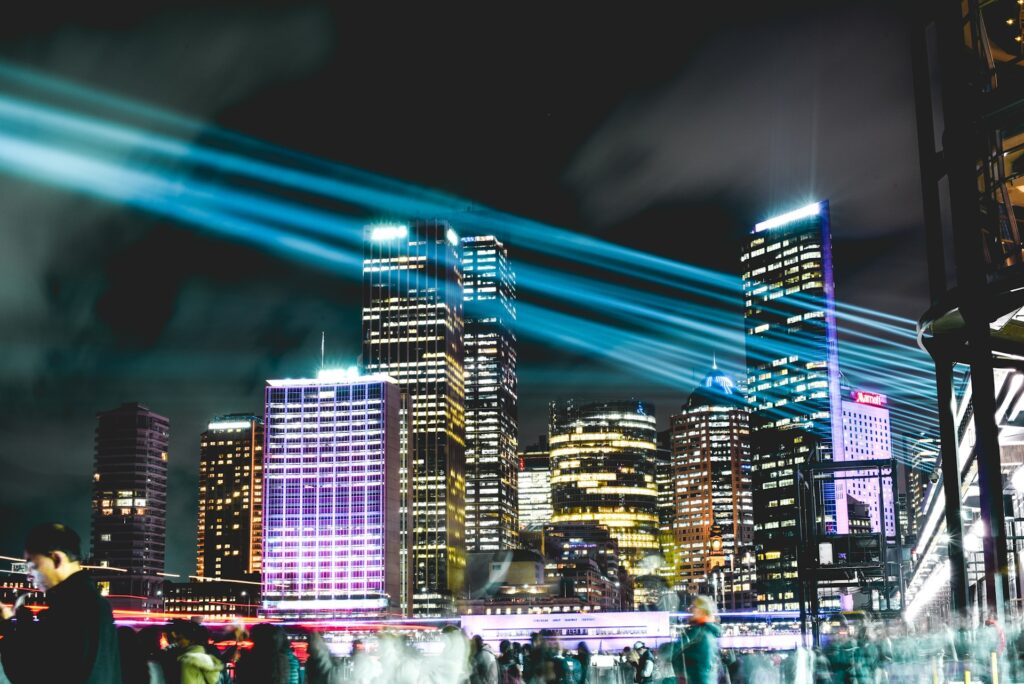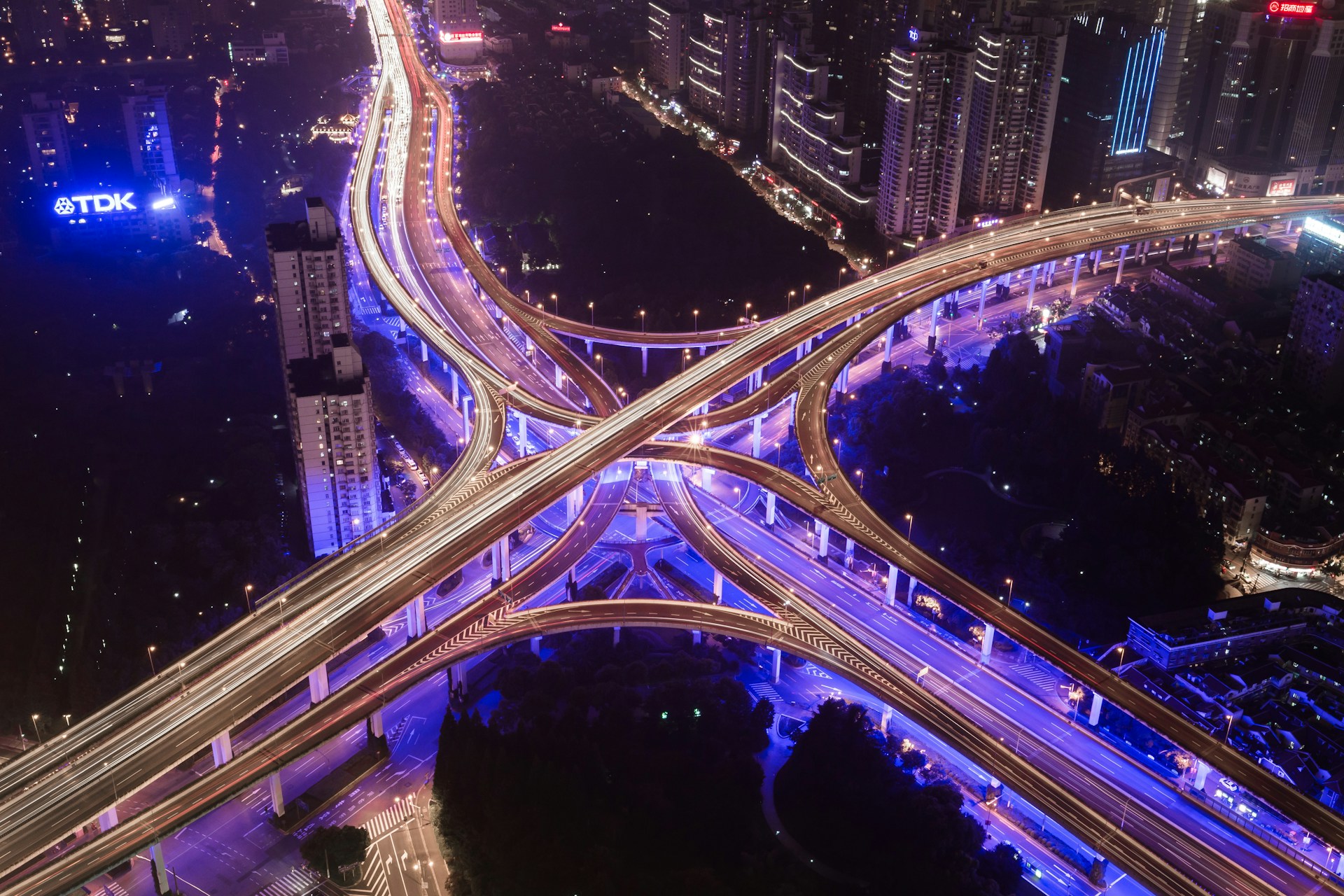The Role of IoT in Smart Cities
The high growth of industry and business means that urban centers need to become intelligent, more
sustainable, and better.
Smart Cities use ICT technology to enhance the quality of life, spatial planning and resource management.
Most acutely associated with smart city advancement is the Internet of Things (IoT), the information control system of connected devices.
Through transportation and waste control, IoT is reshaping the practicality of cities and hurriedly leading to the sustainable development of urban living.
This blog explores the role of IoT in building smart cities, focusing on three critical aspects: efficiency, betterment of people’s quality, and subject of proper and sustainable growth or development.
1. Optimizing Urban Infrastructure with IoT
A strong infrastructure is the key to any smart city.
IoT helps cities control and enhance the physical structures as they can collect data directly from the sensors mounting devices.
It is recognised that this technology transforms how cities work and that this results in improved resource efficiency, cost reduction and enhanced services.
2. Smart Traffic Management
IoT has a major function of reducing traffic congestion—a problem that has affected many cities.
These include traffic signals which incorporate sensor systems and cameras to control the existing traffic patterns and then adapt the signals accordingly and give real-time updates either through an application
installed in the users’ smart phones or through sign boards.
For example:
Smart Traffic Lights: These adjust timing depending with current traffic conditions so that the
congestions are eliminated and least fuel is used.
Connected Vehicles: IoT lets the cars and the roadway to speak to each other, thus making road use
safer and more efficient.
Current technologies ranging from smart traffic lights have been put in practice in areas such as
Singapore as well as Barcelona lowering travel time and air pollution levels.
3. Efficient in Utilities and Energy Management
IoT improves the utility management through the real-time control and monitoring of energy, water and
waste device.
Examples include:
Smart Grids: IoT technology makes distribution of power more efficient, reduces blackouts or failure
and embraces the incorporation of RE sources into the grids more efficiently.
Water Management: Smart technology is used to identify leaks and analyze water quality hence making
sure that water supply is effective and safe.
Smart Waste Collection: Smart waste bins have mechanisms that alert the collection services once the
bin is full and hence optimizing for collection routes and minimizing costs.
These innovations assist city governments in minimising resource and expenses while enhancing reliability and service delivery.
4. Public Safety and Security
Smart objects that are connected include cameras, motion detectors, as well as environmental sensors
making communities safer.
For instance, IoT security cameras can detect suspicious movement, report the same and even map areas with most occurrences of crime through analytical data.
Likewise, the disaster management systems incorporate IoT for identifying the natural disasters including floods, earthquakes, and fire, to the needful speed.
5. Improving Quality of Life for Residents
Smart city consciousness is about taking care of residents and IoT solutions influence the quality of life
dramatically.
In areas of healthcare and operation of public services, IoT increases urban liveability, convenience and puts its citizen first.
6. Smart Healthcare Systems
In the sphere of healthcare, IoT has worked as a game changer particularly in the context of smart city
by way of remote health monitoring and analytics.
Smart connected health devices monitor the patients’ signs, and can alert the attending physicians in the event of variation or not.
For instance:
Remote Patient Monitoring: Wearable help doctors monitor patients’ conditions without face-to-face meetings, thus, make healthcare more convenient and free up hospitals.
Smart Ambulance Services: IoT systems help traffic authorities to relay traffic flow data, which
enhances faster response by ambulances during emergencies.
Most of them have been very beneficial during the COVID-19 outbreak, to ensure that healthcare
services are delivered effectively without physical contact.

7. Improving public transport
IoT enhances life in cities by increasing efficiency in transport by combining current transport systems
with the data flowing from IoT.
Features like:
Live Tracking: People can get updated information on the bus and train and time tables through thesmartphones.
Predictive Maintenance: Existing IoT sensors on trains, buses, and tracks identify possible maintenance
problems and enhance dependability and utilization.
They help to enhance operation of public transport, to make it cheaper and popular among the
population, which will ultimately promote more sustainable personal transport trends among residents.
8. Smart Living and Housing
IoT adds comfort and security to the utilization of houses and apartments to the residents of mega
cities.
IoT based homes mean that residents in smart homes can adjust lighting, heating and security
from the comfort of their homes.
Also, smart building systems make efficiency of energy, minimization of wastes, and enhancement of dwelling standards.
9. Enabling Sustainable Development
For instance smart apartment used IoT to track electrical usage, control heating and cooling systems, as
well as waste management to enhance the living standards of the occupants.
IoT has been identified as an essential factor contributing to smart sustainable developing city to
minimize their influence to the environment, economy, and long-term stability.
Consumption of these technologies make cities smart to ensure that the expansion is sustainable so that they can address the impact of climate change.
10. Reducing Carbon Emissions
IoT enables the change of pace towards clean energy source and sustainable undertakings in cities.
Advanced smart energy grids, rooftop solar panels, smart wind farms linked with it help for proper
supply and demand of energy.
IoT traffic management and public transport also plays an important role in bring down the emissions from vehicles by smartly routing the traffic and thereby encouraging more use of carpooling or public transport systems.
11. Supporting circular economy initiatives
IoT makes sure that resource consumption is optimized, therefore, the generation of waste is minimal.
For instance:
Smart Waste Management: Through its sensors, recyclable material is distinguished and directions to
its sorting provided.
Asset Tracking: In this system, IoT devices identify the lifecycle of the products and makes the
businesses to be in circle economy model.
They reduce wastage, yet enhance the use of resources hence enhancing the fortunes of the urban
ecosystem.
12. Climate Resilience
This technology contribute to reduction and management of the impact of climate change
within cities.
Climate control devices measure concentrations of toxic substances in the atmosphere, air temperature and pollution density are rather useful knowing them.
For example: There is control of water usage for urban agriculture through smart irrigation systems.
Weather alerts identify deviations from normalcy hence facilitating application of moderation measures
by cities.
These solutions help cities to maintain sustainability while keeping the negative effects of their
expansion at an absolute minimum.
Conclusion: Internet of things for smarter and sustainable cities
IoT is a milestone to smart cities because it brings solution-oriented approaches that shape the physical
environment to the optimum and improve the standard of living while preserving the environment.
By adopting these solutions into the urban landscape, cities are best positioned to solve the problems that
affect our society’s growth and wellbeing by developing ecosystems that are intelligent, socially
sensitive, and sustainable.
However, for IoT to serve its potential, several factors such as data security, privacy and accessibility to
such technologies have to be solved at city level.
It is for this reason that when properly planned, executed and coordinated, it plays a critical role in fostering development of smart cities that respect the people and our environment.
A smarter city of the future is not merely a creation of smart technology but is rather a concept about making societies better for all.
Also read: What is Smart City: The Intersection of Technology and Urban Living

